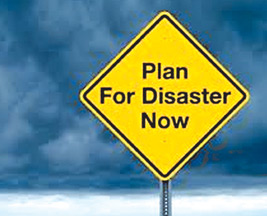|
Disaster preparedness:
Lanka makes significant progress
The Ministry of Disaster Management with the World Bank launched a
Climate Resilience Program on Friday at the Disaster Management
Conference at the BMICH, titled 'The Future we want – a Safer Sri
Lanka'.
 Since the catastrophic tsunami, Sri Lanka has achieved significant
progress by strengthening preparedness to safeguard lives. There is a
lot more to be done to reduce the economic and the social impact of
disasters. Since the catastrophic tsunami, Sri Lanka has achieved significant
progress by strengthening preparedness to safeguard lives. There is a
lot more to be done to reduce the economic and the social impact of
disasters.
Given Sri Lanka’s development trajectory and increasing incidents of
natural events it is commendable that the Government is embarking on a
fairly large program with essential investments in the disaster
management sector, the World Bank said in a media release.
“Today we are embarking on a long-term engagement to analyse the root
causes of disasters and will finance a wide range of measures to
increase resilience to these adverse events,” said World Bank Country
Director for Sri Lanka and the Maldives, Francoise Clottes.
“The World Bank is pleased to be a part of this program and supports
the Government to be better prepared to face external shocks that would
impact on efforts to reduce poverty and promote shared prosperity in Sri
Lanka,” she said.
The landmark program looks at the climate risk in a holistic way and
helps the government to implement short, medium and long-term measures
to address the physical and fiscal aspects of disaster risk.
The program consists of the Climate Resilience Improvement Project
worth US$ 110 million and a Development Policy Loan with a Catastrophe
Deferred Draw Down Option (CATDDO) of US$ 102 million.
CATDDO is a new instrument which provides immediate liquidity to the
government after a disaster and Sri Lanka is the first country in the
South Asian region to use this facility.
In addition to the two projects, significant technical assistance is
expected with the support of the Global Facility for Disaster Reduction
and Recovery (GFDRR) in the areas of risk modeling and disaster risk
financing and insurance. |

